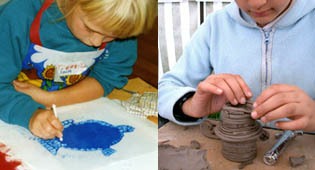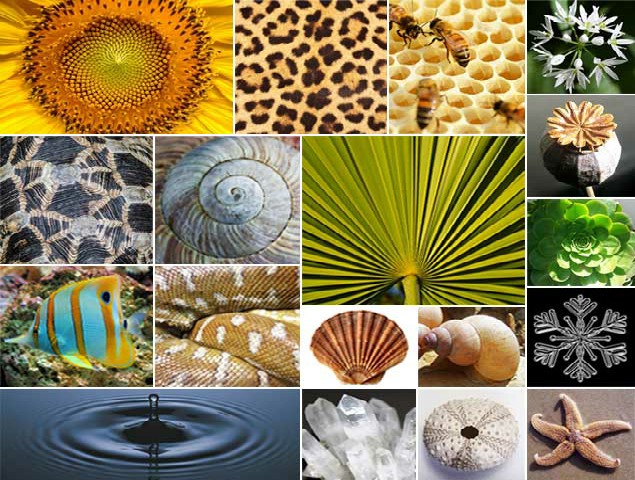











a historical perspective
Origins of maths
Mathematics is largely taught today as an abstract language and concept -
Mathematical concepts are much more than this -

geometry can be found everywhere in nature
Historians of mathematics, however, rarely go back beyond the original development of written numerals, such as those incised onto clay tablets in the early Middle Eastern civilisations from 5000 years ago.
Before this time there was a long tradition of counting, evidenced by tally marks on Neolithic bones, antlers and clay tokens from about 10,000 years ago, but hunter/gathering societies seem to have had little need for more complex calculations, this only becoming necessary when people settled into agricultural communities where ownership, trade and barter became a dominant factor.
An example of how important transactions were recorded using number tokens can be seen in this description from wikipedia:
"to create a record that represented 'twenty five sheep', they selected two round clay tokens representing ten sheep, and five tokens each representing one sheep. These were strung like beads on a string. To ensure that nobody could alter the number and type of tokens, they invented a clay envelope, shaped like a hollow ball into which the tokens on a string were placed, sealed, and baked. If anyone challenged the numbers all you had to do was break open the clay ball to find the original tokens.
To avoid any unnecessary damage to the record, they also pressed archaic number signs and witness seals on the outside of the envelope before it was baked, each sign similar in shape to the tokens they represented. Since there was then seldom any need to break open the envelope, the signs on the outside became the first written language for writing numbers in clay."
resource link > wikipedia 'history of writing ancient numbers’
Our progress towards an abstract mathematics has developed using gradually more and more sophisticated symbols. The more abstract it becomes the harder it is to see the connection with the natural world, and the easier it is to get lost -

abstract concepts from notches in sticks, images and symbols, to complex mathematical notation
what do we mean -
• there is special knowledge and understanding to be gained by making things
• childhood plays a vital part in this innovative process
a historical perspective
• observation, trial and error
• origins of maths
• patterns and geometry
facing the future
growing concerns
• Neil MacGregor
• Sherry Turkle
• Seymour Papert